How to Get the Most from a Winter Garden
Posted by Edmonton Homes.ca on Friday, December 3rd, 2021 at 11:59am.
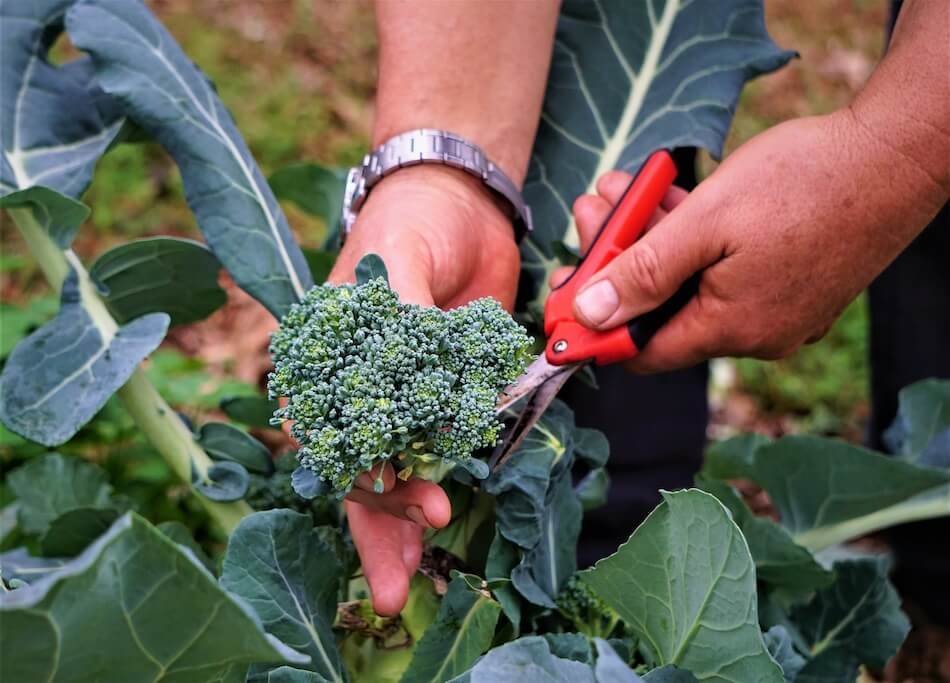 For many gardening enthusiasts, the end of the fall can be the close of the gardening season or the start of a new one. Winter gardening is a different hobby in many ways because it requires a unique selection of plants and a varying approach to handling the effects of the climate. Of course, homeowners who live in mild climates may benefit from year-round gardening, but those who live in colder regions can, as well. By taking a careful approach to choosing plants and protecting them from the weather, gardening enthusiasts can benefit from a beautiful, productive winter garden. Keep reading for tips on creating and maintaining a winter garden.
For many gardening enthusiasts, the end of the fall can be the close of the gardening season or the start of a new one. Winter gardening is a different hobby in many ways because it requires a unique selection of plants and a varying approach to handling the effects of the climate. Of course, homeowners who live in mild climates may benefit from year-round gardening, but those who live in colder regions can, as well. By taking a careful approach to choosing plants and protecting them from the weather, gardening enthusiasts can benefit from a beautiful, productive winter garden. Keep reading for tips on creating and maintaining a winter garden.
Table of Contents
Factors to Consider Before Winter Gardening
There are a variety of practical concerns when it comes to winter gardening. By evaluating their willingness to make a commitment and the gardening limits of the region, homeowners can determine which approach will be best for them.
Time & Ability
Winter gardening may not be time-consuming in the same ways as summer gardening, but it is still an investment. Homeowners have to evaluate the best types of plants and ensure that they can survive periods of cold or frosty weather. In most cases, gardening plans can scale according to a person's end goal. For example, someone who only wants to spend a little time might consider purchasing and using a handful of containers for the garden. By comparison, someone who has a lot of time and interest may want to devote much of their outdoor space to the endeavour.
Space & Budget
The space available for gardening, and the costs involved, are other factors to keep in mind while planning. In many instances, someone who has a large garden in spring, summer, and fall might devote less space to a winter garden. Hobbyists who are just getting started with gardening, in general, may prefer to start small so that they have less complication as they learn. Typically, more extensive gardens cost more to create and maintain. Homeowners with limited budgets may also want to consider limiting the size of the garden to keep the costs to a manageable level.
Plant Hardiness Zones
The way homeowners manage winter gardening depends heavily on the plant hardiness zone that they live in. The country is divided into zones ranging from 0 to 8 based on the coldest expected temperatures and the average first frost date. Prospective gardeners can search for a map to determine which zone relates to their region. Zone 0 is the coldest, while zone 8 is the warmest. Homeowners in colder regions may have limited options for maintaining winter vegetables and flowers.
The other zones offer more flexibility. Zones 0 to 3 have the coldest temperatures and the most snowfall. People can typically manage their gardens in these regions with protective measures. Zones 7 and 8 are the warmest and provide the easiest winter environment for growing. In all regions, the zones dictate the best time to plant certain varieties and point gardeners toward recommendations to protect their chosen plants.
Gardeners also aren't limited to buying plants exclusively from their zone. Plants with low zone numbers can live in any zone equal to or lower than their designated zone. For example, a homeowner living in zone 3 can purchase and grow plants from zones 0, 1, 2, and 3. On the other hand, someone living in zone 0 should try to exclusively buy plants meant for their zone, as it will be very easy to kill plants meant for other zones.
Planning Your Garden
Planning a winter garden calls for many of the same skills gardeners use throughout the year. Gardeners must manage weather considerations, sunlight exposure, and choosing appropriate species. By considering plants that are most likely to thrive, homeowners can simplify the process and increase their chances of success.
Determine Layout
Preparing to dig a garden in winter is not unlike doing the same in summer, except the ground may be more challenging to work. Homeowners should plan to do the same research in advance to determine the best layout. For example, they may want to evaluate the sun's path to determine which parts of the yard provide the most sun in winter. Ensuring adequate sun is vital for the successful growth of the plants. In addition, those digging into the ground will want to make sure that they will not accidentally cut a buried utility line or other cables.
Cold-Hardy Vegetables
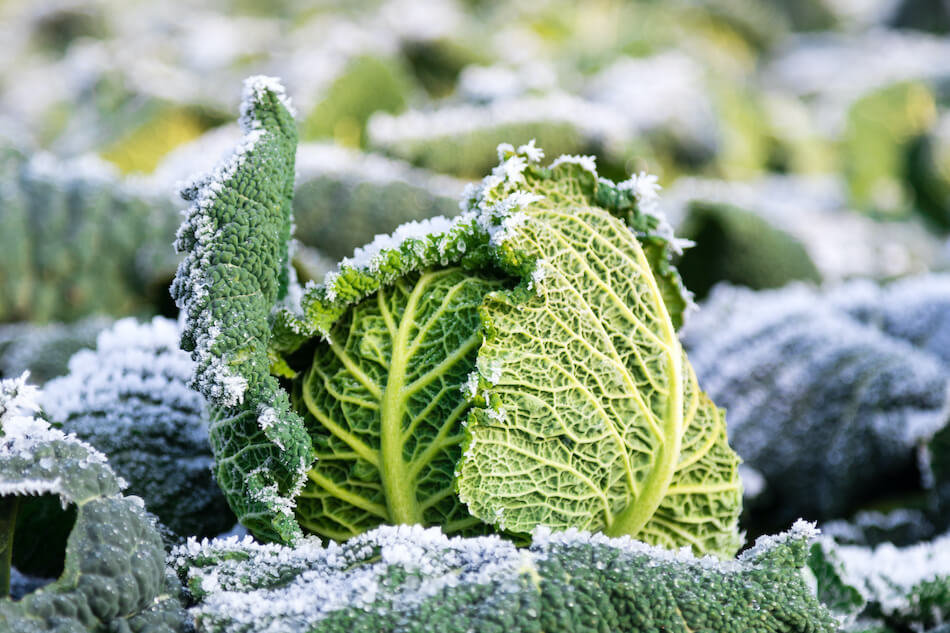 Depending on the zone, homeowners have a variety of options for growing cold-hardy vegetables. People should keep in mind that vegetables do not grow as quickly during the winter, given the colder temperatures and fewer hours of sunlight. As such, they may want to consider how long of a growing season they are willing to maintain. Winter vegetables are broadly categorized into three types:
Depending on the zone, homeowners have a variety of options for growing cold-hardy vegetables. People should keep in mind that vegetables do not grow as quickly during the winter, given the colder temperatures and fewer hours of sunlight. As such, they may want to consider how long of a growing season they are willing to maintain. Winter vegetables are broadly categorized into three types:
- Slowly maturing
- Middle maturing
- Quickly maturing
Vegetables that take months to mature include carrots, Brussels sprouts, and cabbage. Plants that take a month or two to produce are typically leafy greens like kale and frost-friendly radishes. The ones that mature the fastest, in a bit over a month, generally are salad greens and lettuces. In addition, homeowners can grow a selection of cold-hardy herbs like mint or chives. In most cases, people must plant the vegetables and grow them to reasonable maturity before the first hard frost. Otherwise, they may not be able to survive the temperature, even with support.
Winter-Blooming Cold-Hardy Flowers
Although many people think of winter gardening as an extension of the produce season, this practice also keeps the property looking alive. Many flowering plants can tolerate layers of snow and cold temperatures without compromising their ability to sprout and bloom. Homeowners should plant them in the fall before the ground freezes. Early spring bulbs, like crocuses and daffodils, are popular in many gardens. Otherwise, homeowners could plant holly bushes, which bloom in early spring, or ornamental cabbage and kale. These may require additional care to establish before winter arrives but could be well worth the effort.
Companion Plants
Although homeowners are relatively free to plant what they like where they live, the plants grow differently depending on what is planted next to them. Most species have companion plants that work well when gardeners plant them together. Specifically, companion plants help to drive off the other's common pests and avoid competing with each other for access to sunlight and nutrients. For example, pairing carrots with leeks or onions is good because they both have strong odours that deter pests.
It is important to research the best pairings and avoid ones that do not work well together. Onions can be planted next to brassica plants like Brussels sprouts or broccoli, but radishes may not thrive in the same environment. Strong-smelling herbs like sage are good to plant near celery, cabbage, and some lettuces because the odour drives away pests.
Planting Your Garden
Determining the best way to plant the garden is the next step. It depends on the plants homeowners want to grow, as well as the plant hardiness zone. Taking care during the initial planting or transplanting helps to ensure better production during the winter.
When to Start
The best time to start planting depends on the plant. For example, homeowners looking to take advantage of a long growing season may choose to plant cool-weather vegetables directly into the ground in late summer. By mid to late fall, around the time of the first frost date, vegetables that take a couple of months to mature may be ready to harvest.
Similarly, people can plant short-season produce like herbs or salad greens in early fall. They will not grow much once the weather gets cold, but they may survive the cold and frost without wilting, making them easy to harvest anytime. In some cases, people may take a mature plant and give it extra protection so that it will continue to grow next year. This approach is called overwintering and may require bringing the plant indoors or placing it in a greenhouse.
Where to Start
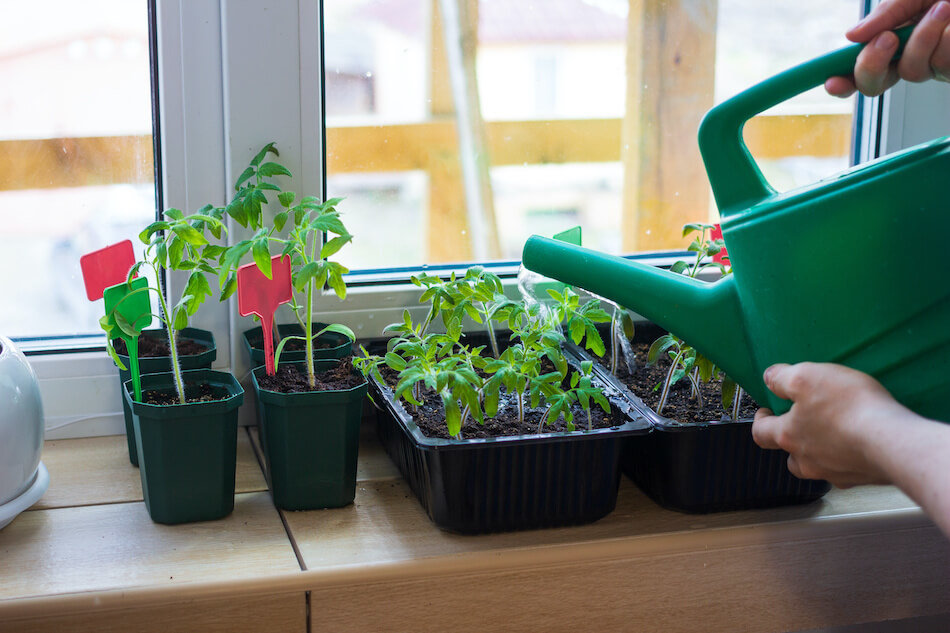 Although many homeowners plan to maintain a winter garden outdoors, some options involve some use of indoor space. For example, it is common for gardeners to start seeds indoors. This allows them to take advantage of a shorter growing season in their area or reach harvest in the spring with the benefit of electricity and heat inside the home. On the other hand, sowing directly into raised beds improves drainage and prevents rotting that can be common in winter. However, people may need to design some kind of windbreak to protect the plants. Row covers or cloches can help.
Although many homeowners plan to maintain a winter garden outdoors, some options involve some use of indoor space. For example, it is common for gardeners to start seeds indoors. This allows them to take advantage of a shorter growing season in their area or reach harvest in the spring with the benefit of electricity and heat inside the home. On the other hand, sowing directly into raised beds improves drainage and prevents rotting that can be common in winter. However, people may need to design some kind of windbreak to protect the plants. Row covers or cloches can help.
Transplanting Tips
For gardeners who are starting seeds indoors or in a greenhouse, proper transplanting is key. Homeowners can do this using a hardening-off method or a cold frame. As a general rule, people should wait to transplant until the seedling has at least two sets of leaves. This indicates that it is growing well and isn't depending on its initial food stores anymore. They can "harden off" the plant by bringing it outside during warmer hours for a week or two before transplanting. Placing seedlings into a cold frame can also help protect them during this process, making transplanting more successful.
Protecting Your Garden
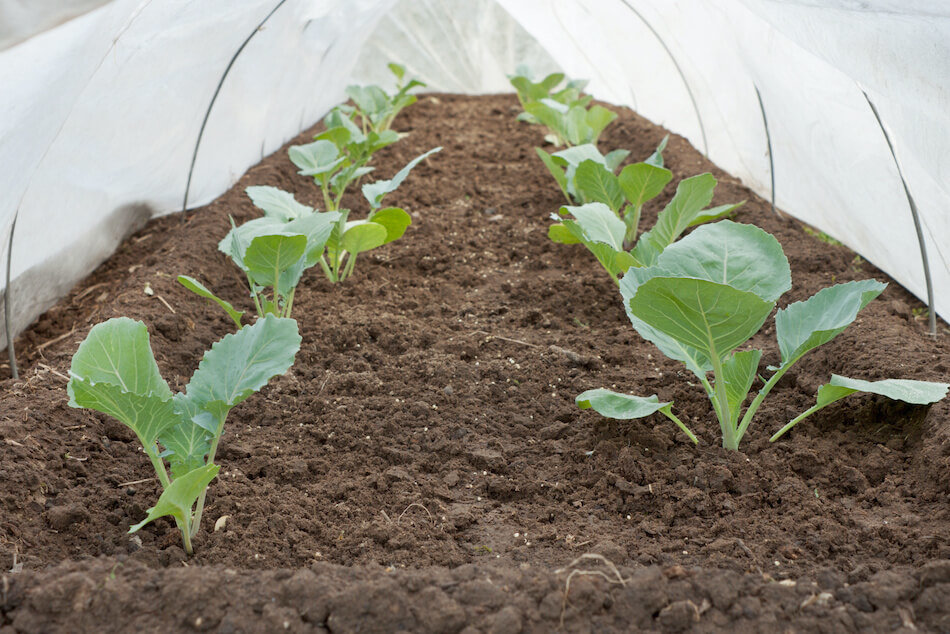 Protecting the garden may require more than one approach. Some are easy to build or make from household products, while others require a purchase. When homeowners select the most appropriate from a variety of options, they can maintain many plants in regions they wouldn't otherwise thrive in.
Protecting the garden may require more than one approach. Some are easy to build or make from household products, while others require a purchase. When homeowners select the most appropriate from a variety of options, they can maintain many plants in regions they wouldn't otherwise thrive in.
Mulching
Mulching is the process of creating small bits or shreds of a decomposing material like grass, leaves, or bark. Mulch is a beneficial addition to the top of the soil in the garden because it helps maintain a higher temperature for the soil. With warmer soil, the delicate roots of perennials can be protected. Homeowners can use almost anything as mulch, but they should avoid mulching weeds or diseased plants. Commercial options often have a variety of plant matter, which improves drainage and minimizes clumping or odours. People may want to vary the plants that they mulch to get the same benefits.
Cloches
A cloche can be a great way for homeowners to protect young seedlings from wind and frost without compromising their access to sunlight. In essence, a cloche is a bell-shaped cover, usually made out of clear plastic. It may have a hole at the top for ventilation, which also makes room for a stick used to support the seedling growing upward.
Homeowners may easily find cloches at local gardening centers or make them themselves. To make a cloche, DIYers can cut the bottom out of a large plastic bottle. The size depends on the size of the plant needing protection. A two-litre bottle may be sufficient for smaller seedlings, while a five-gallon bottle is usually better for perennials. Cloches may need to be removed on sunny days for ventilation. Keep in mind that homemade cloches might not be as durable as store-bought ones.
Row Covers
Row covers are an excellent way to protect bushy or larger plants, as well as larger gardens with long rows. The material most commonly used, often called Reemay, typically needs to be purchased, not made. It is a lightweight fabric that allows light, water, and air to pass through. It helps to insulate the plants and the soil and acts as a windbreak. People can purchase Reemay in various sizes, some as long as 50 feet or more.
To make a row cover, just drape this material over the plants and hold it down with boards or rocks as needed. For a more formal arrangement, homeowners can drape the fabric over a series of wire semicircles embedded in the ground. This arrangement is more appropriate for plants of varying sizes and may make it easier to use for more than one season.
Cold Frames
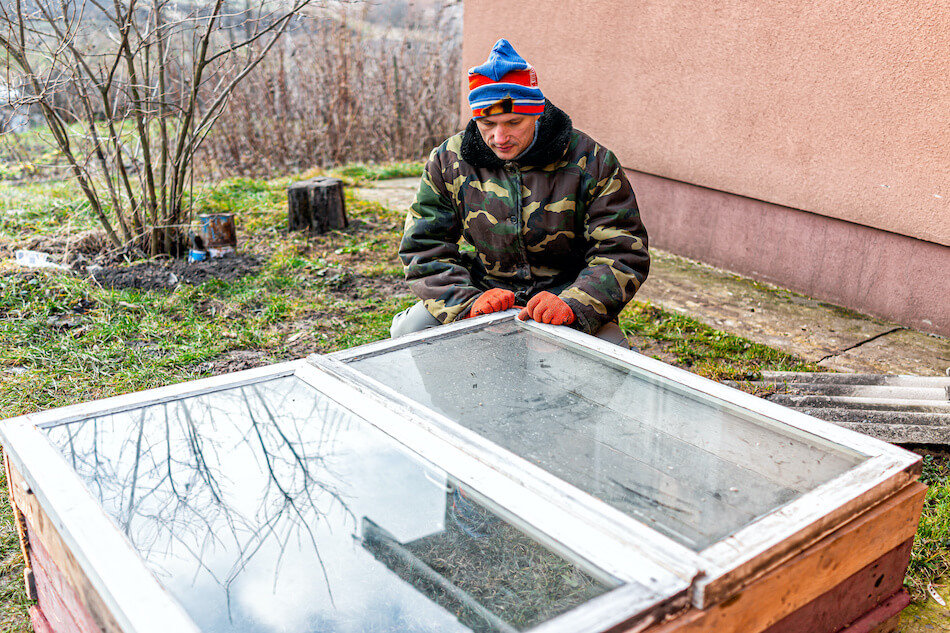 A cold frame is a cheaper and smaller alternative to a greenhouse, usually a glass-lidded box made out of a durable material such as wood, brick, or stone. This frame blocks the worst of cold, windy, or icy weather. Homeowners can prop open the lid on sunny days to promote ventilation. People may choose to plant directly into the soil inside the cold frame, but it is also common to place small containers inside. Cold frames are a popular approach for hardening off plants started indoors.
A cold frame is a cheaper and smaller alternative to a greenhouse, usually a glass-lidded box made out of a durable material such as wood, brick, or stone. This frame blocks the worst of cold, windy, or icy weather. Homeowners can prop open the lid on sunny days to promote ventilation. People may choose to plant directly into the soil inside the cold frame, but it is also common to place small containers inside. Cold frames are a popular approach for hardening off plants started indoors.
DIY cold frames may only require a handful of boards and an old window. Commercial cold frames typically cost more but should be relatively simple to assemble. The trick for most people is ensuring the proper height for the plants they intend to place inside. A shallow box may be most appropriate for small seedlings or overwintering ground cover.
Greenhouses
Greenhouses usually provide the best protection for a winter garden. The best type depends on the gardener's budget and expectations for the garden. The simplest style is similar to a row cover but usually much larger, with a durable material like canvas to go over the wire or PVC frame. This style is reasonably simple to set up, and DIYers can often build it without a kit for the lowest cost. The greenhouse may have sides that are easy to open and close on sunny days for ventilation.
The most complicated greenhouses often require a kit or a skilled builder because they use a permanent frame and could have other features like electricity or heating. These greenhouses may still be covered with similar materials or rely on glass for the best long-term protection. With this setup, people may be able to grow most plants in virtually any region.
Common Mistakes
Although using these protective measures can extend the growing season for homeowners, they are not without possible complications. People who plant the garden too late may not give the seedlings enough time to grow before cold temperatures kill the roots. Choosing the wrong plants for the climate may result in the same problem. Failing to ventilate covered plants on sunny days can wilt them as readily as a hot summer day. Ultimately, a lack of necessary maintenance, such as watering or weeding, may render the project not as productive as it could have been.
Winter Garden Maintenance
Maintaining an existing garden requires care in any season. People should plan to keep it up at least once a week for best results. Homeowners will get the most from their winter gardens by paying attention to the right ways to water, weed, prune, and harvest.
Watering and Weeding
Homeowners should plan to water the garden significantly less in winter. In some cases, particularly with a cold frame or row cover, homeowners might not need to water at all. Some plants benefit from weekly watering, especially during periods of little precipitation. People can look for signs of drying out or add extra mulch to retain more moisture.
Weeding, on the other hand, is an essential task during the winter. Weeds are often cold-hardy and must be plucked before they grow deeper roots. Regular weeding can help to ensure that the garden is better protected when spring arrives.
Pruning
Pruning also requires a careful hand, particularly in fall and winter. As a general rule, homeowners who are unsure how to prune perennials or cold-hardy plants may want to leave them alone until spring. Some plants require pruning in the late fall to remove spent vines or take away dead flower heads. Others may begin to regrow after the pruning, which puts them at risk when the frost hits. Doing some research in advance, particularly for delicate perennials not native to the region, can help people learn what they should do and when.
Finally—Harvesting!
Homeowners have a couple of options for harvesting their winter gardens, depending on the plant and how they want to use it. Leafy vegetables and herbs are easy to harvest using the cut-and-come-again method. With this approach, gardeners simply cut leaves or pieces away as they need them, leaving the remainder of the plant intact. The cutting promotes new growth and allows people to use the garden throughout the winter. It is also easy to leave some mature root vegetables in place in the ground to avoid having to store them inside.
Some vegetables planted in the summer or fall are better when harvested in the early winter. For example, carrots are a popular cold-season vegetable, and they can take a few months to grow. Waiting until after the first frost harvest may allow the sugars to concentrate in the root. As a result, patient gardeners end up with a sweeter, better-tasting vegetable.
Reap the Rewards of Winter Gardening
Winter gardening may seem difficult. For a dedicated gardener, it is also full of potential. People have to take care of plants regularly during the summer to avoid pests, provide enough water, and shelter them from the hot sun or strong winds. Homeowners must do similar things for a winter garden, except to protect the plants from cold and frost. A well-informed approach can result in months more produce or a better harvest in the spring. By following these tips, homeowners can garden successfully in winter with fewer problems.
Additional Reading
- https://www.gardendesign.com/winter/tips.html
- https://savvygardening.com/grow-fresh-vegetables-in-winter/
- https://treetime.ca/plant-hardiness-zones.php
- https://www.shelterlogic.com/shop/knowledge/growers-guide-tips-winter-gardening
- https://home.howstuffworks.com/5-ways-to-garden-in-winter.htm
- https://www.treehugger.com/winter-gardening-tips-4863366
- https://www.motherearthnews.com/organic-gardening/gardening-techniques/winter-gardening-tips-best-crops-zm0z13onzsto
- https://www.fix.com/blog/winter-gardening-guide/
- https://learn.eartheasy.com/articles/winter-gardening-best-crops-to-extend-your-harvest/
- http://www.motherofahubbard.com/winter-vegetable-planting-dates/
- https://learn.eartheasy.com/articles/ten-ways-to-prepare-your-garden-for-winter/
- https://www.paraspaceinc.com/blog/plant-hardiness-zones
- https://www.veranda.com/outdoor-garden/g34384895/winter-flowers/
- https://tuigarden.co.nz/ideas-and-inspiration/winter-companion-plants/
- https://www.treehugger.com/ways-to-use-a-cold-frame-5197361
- https://www.hgtv.com/outdoors/gardens/planting-and-maintenance/do-not-make-these-winter-gardening-mistakes-pictures
- https://www.gardeningknowhow.com/garden-how-to/info/winter-gardening-dos-and-donts.htm
- https://mother-nature.ca/winter-gardening/
- https://eastcoastliving.ca/2011/11/gardening-winter11/
- https://empressofdirt.net/grow-vegetables-in-winter/

